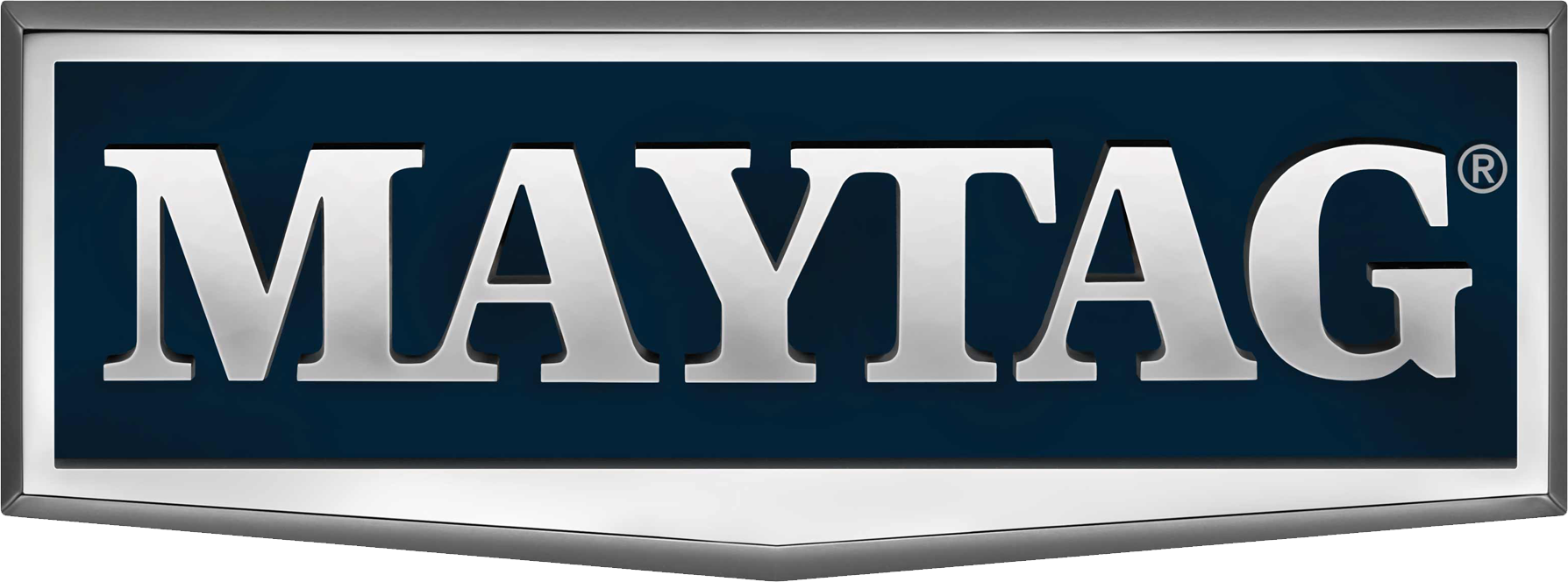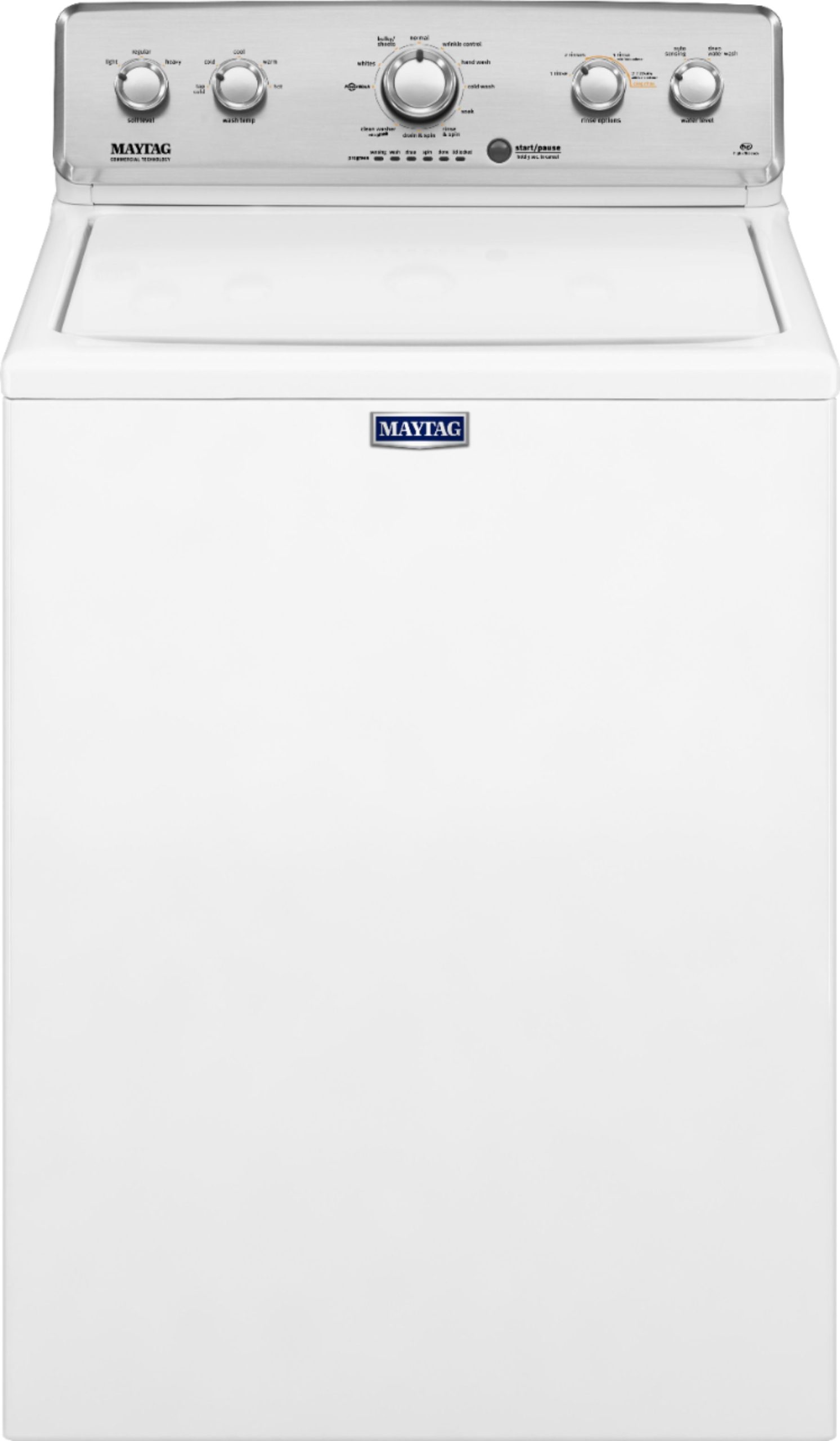Maytag W10240509E load Washer Installation Guide

MAYTAG W10240509E load Washer

LOCATION REQUIREMENTS
Select proper location for your washer to improve performance and minimize noise and possible “washer walk”. Install your washer in a basement, laundry room, closet, or recessed area.
You will need:
- A water heater set to 120°F (49°C).
- A grounded electrical outlet located within 4 ft (1.2 m) of power cord on back of washer.
- Hot and cold water faucets located within 3 ft (0.9 m) of hot and cold water fill valves on washer, and water pressure of 20-100 psi (138-690 kPa).
- A level floor with maximum slope of 1″ (25 mm) under entire washer. Installing on carpet is not recommended.
- Floor must support washer’s total weight (with water and load) of 315 lbs (143 kgs).
IMPORTANT: Do not install, store, or operate washer where it will be exposed to weather or in temperatures below 32°F (0°C). Water remaining in washer after use may cause damage in low temperatures. See “Washer Care” in your Use and Care Guide for winterizing information.
Proper installation is your responsibility.
Recessed Area or Closet Installation
Dimensions show recommended spacing allowed, except for closet door ventilation openings which are minimum required. This washer has been tested for installation with spacing of 0″ (0 mm) clearance on the sides. Consider allowing more space for ease of installation and servicing, and spacing for companion appliances and clearances for walls, doors, and floor moldings. Add spacing of 1″ (25 mm) on all sides of washer to reduce noise transfer. If a closet door or louvered door is installed, top and bottom air openings in door are required.
DRAIN SYSTEM
Drain system can be installed using a floor drain, wall standpipe, floor standpipe, or laundry tub. Select method you need.
Floor Standpipe Drain System
Minimum diameter for a standpipe drain: 2″ (51 mm). Minimum carry-away capacity: 17 gal. (64 L) per minute. Top of standpipe must be at least 39″ (990 mm) high; install no higher than 96″ (2.44 m) from bottom of washer. If you must install higher than 96″ (2.44 m), you will need a sump pump system.
It is the responsibility of the installer to install and secure the drain hose into the provided plumbing/drain in a manner that will avoid the drain hose coming out of or leaking from the plumbing/drain.
Wall Standpipe Drain System
See requirements for floor standpipe drain system.
Floor Drain System
Floor drain system requires a Siphon Break Kit (Part Number 285834), 2 Connector Kits (Part Number 285835), and an Extension Drain Hose (Part Number 285863) that may be purchased separately. To order, please see toll-free phone numbers in your Use and Care Guide. Minimum siphon break: 28″ (710 mm) from bottom of washer. (Additional hoses may be needed.)
Laundry Tub Drain System
Minimum capacity: 20 gal. (76 L). Top of laundry tub must be at least 39″ (990 mm) above floor; install no higher than 96″ (2.44 m) from bottom of washer.
IMPORTANT: To avoid siphoning, no more than 4.5″ (114 mm) of drain hose should be inside standpipe or below the top of wash tub. Secure drain hose with cable tie.
ELECTRICAL REQUIREMENTS
- A 120 volt, 60 Hz., AC only, 15- or 20-amp, fused electrical supply is required. A time-delay fuse or circuit breaker is recommended. It is recommended that a separate circuit breaker serving only this appliance be provided.
- This washer is equipped with a power supply cord having a 3 prong grounding plug.
- To minimize possible shock hazard, the cord must be plugged into a mating, 3 prong, grounding-type outlet, grounded in accordance with local codes and ordinances. If a mating outlet is not available, it is the personal responsibility and obligation of the customer to have the properly grounded outlet installed by a qualified electrician.
- If codes permit and a separate ground wire is used, it is recommended that a qualified electrician determine that the ground path is adequate.
- Do not ground to a gas pipe.
- Check with a qualified electrician if you are not sure the washer is properly grounded.
- Do not have a fuse in the neutral or ground circuit.
INSTALLATION INSTRUCTIONS
Before you start: remove shipping materials
It is necessary to remove all shipping materials for proper operation and to avoid excessive noise from washer.
- Move washer
NOTE: To avoid floor damage, set washer onto cardboard before moving it and make sure lid is taped shut. - Remove shipping base
IMPORTANT: Removing shipping base is necessary for proper operation. If your washer includes a sound shield, please refer to the instructions included with the sound shield to install it at this time. - Remove packing tray from tub
NOTE: Keep tray in case you need to move washer later. - Free power cord
- Attach drain hose to drain port
If clamp is not already in place on elbow end of drain hose, slide it over end as shown. Squeeze clamp with pliers and slide black elbow end of drain hose onto black drain port and secure with clamp.
For a laundry tub or standpipe drain, go to step 6.
For a floor drain, remove the preinstalled drain hose form as shown in Step 7. You may need additional parts with separate directions. See “Tools and Parts”. - Place drain hose in standpipe
IMPORTANT: 4.5″ (114 mm) of drain hose should be inside standpipe; do not force excess hose into standpipe or lay on bottom of laundry tub. Drain hose form must be used. - Remove drain hose form (floor drain installations only)
CONNECT INLET HOSES
Washer must be connected to water faucets with new inlet hoses with flat washers (not provided). Do not use old hoses.
NOTE: Both hoses must be attached and have water flowing to inlet valves. If you are only connecting to a cold water faucet, you must use a Y-adapter (not provided). - Connect inlet hoses to water faucets
IMPORTANT: Do not overtighten or use tape or sealants on valve when attaching to faucets or washer. Damage can result. - Clear water lines
Make note of which hose is connected to hot water to help in attaching hoses to washer correctly. - Connect inlet hoses to washer
IMPORTANT: To reduce risk of hose failure, replace the hoses every 5 years. Record hose installation or replacement dates for future reference. - Check for leaks
- Secure drain hose
LEVEL WASHER
IMPORTANT: Level washer properly to reduce excess noise and vibration. - Check levelness of washer
- Adjust leveling feet
On models with metal feet, use a 9/16″ or 14 mm open-end or adjustable wrench to turn jam nuts clockwise on feet until they are about 1/2″ (13 mm) from the washer cabinet. Then turn the leveling foot clockwise to lower the washer or counterclockwise to raise the washer.
On models with plastic feet, use adjustable pliers to turn the plastic leveling foot counterclockwise to lower the washer or clockwise to raise the washer. On all models, recheck levelness of washer and repeat as needed.
HELPFUL TIP: You may want to prop up front of washer about 4″ (102 mm) with a wood block or similar object that will support weight of washer. - Tighten leveling feet
HELPFUL TIP: You may want to prop washer with wooden block. - Plug into a grounded 3 prong outlet
COMPLETE INSTALLATION CHECKLIST
- Check electrical requirements. Be sure you have correct electrical supply and recommended grounding method.
- Check that all parts are now installed. If there is an extra part, go back through steps to see what was skipped.
- Check that you have all of your tools.
- Check that shipping materials were completely removed from washer.
- Check that water faucets are on.
- Check for leaks around faucets and inlet hoses.
- Remove protective film from console and any tape remaining on washer.
- Check that washer is plugged into a grounded 3 prong outlet.
- Dispose of/recycle all packaging materials.
- Read “Washer Care” in your Use and Care Guide.
- To test and clean your washer, measure 1/2 of normal recommended amount of powdered or liquid detergent and pour it into washer basket or detergent dispenser (on some models). Close lid. Select any cycle. Start washer and allow to complete full cycle.